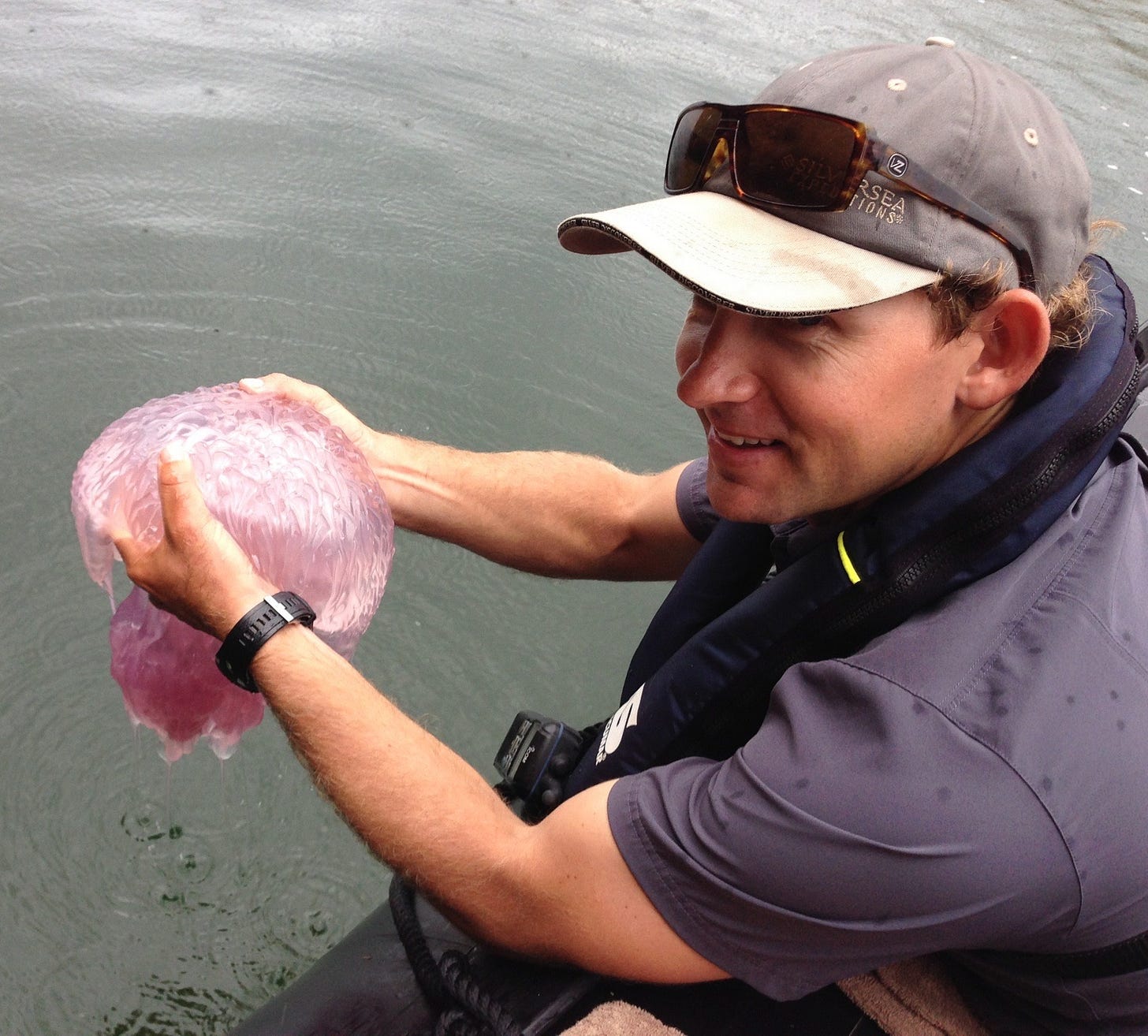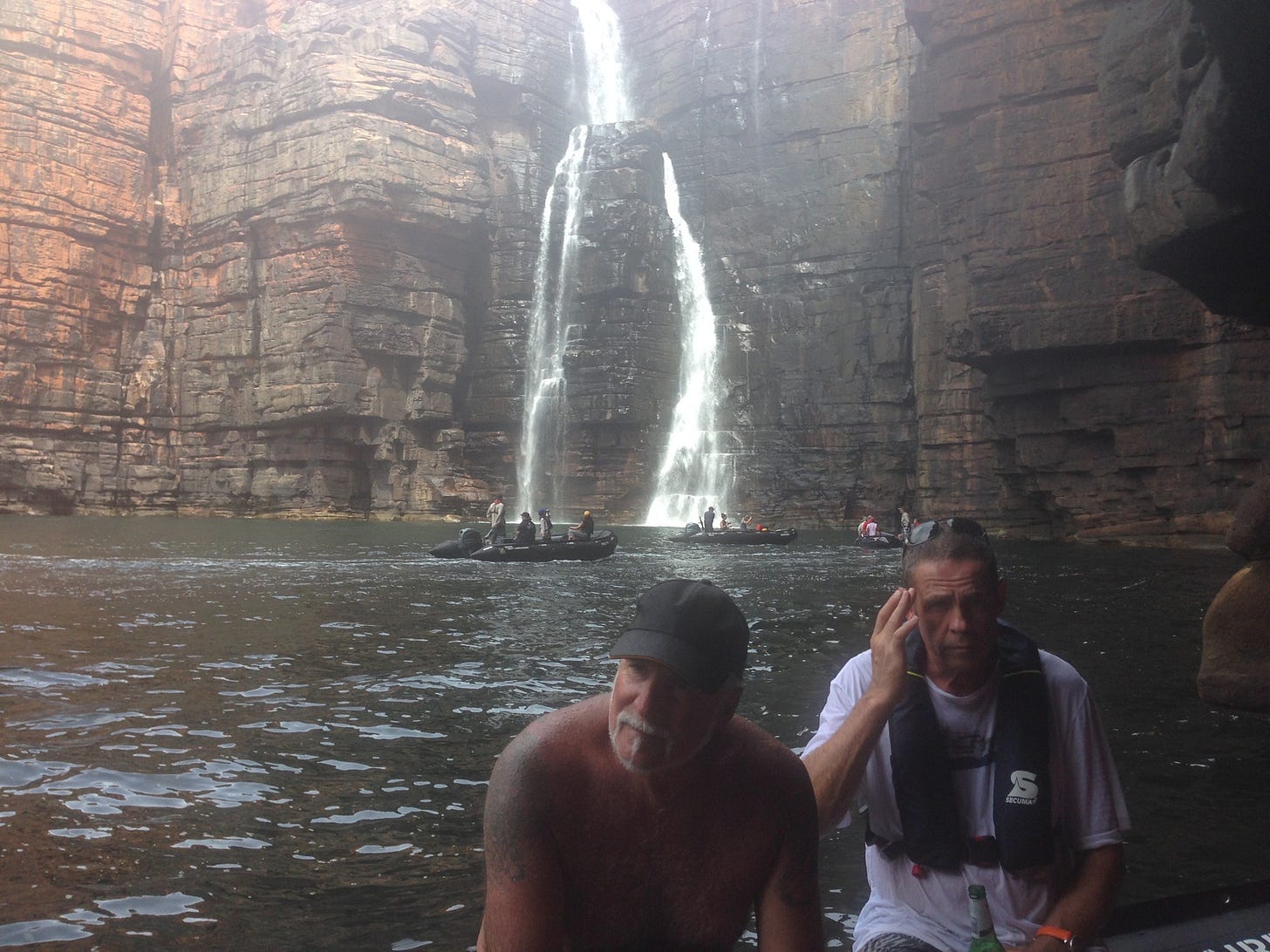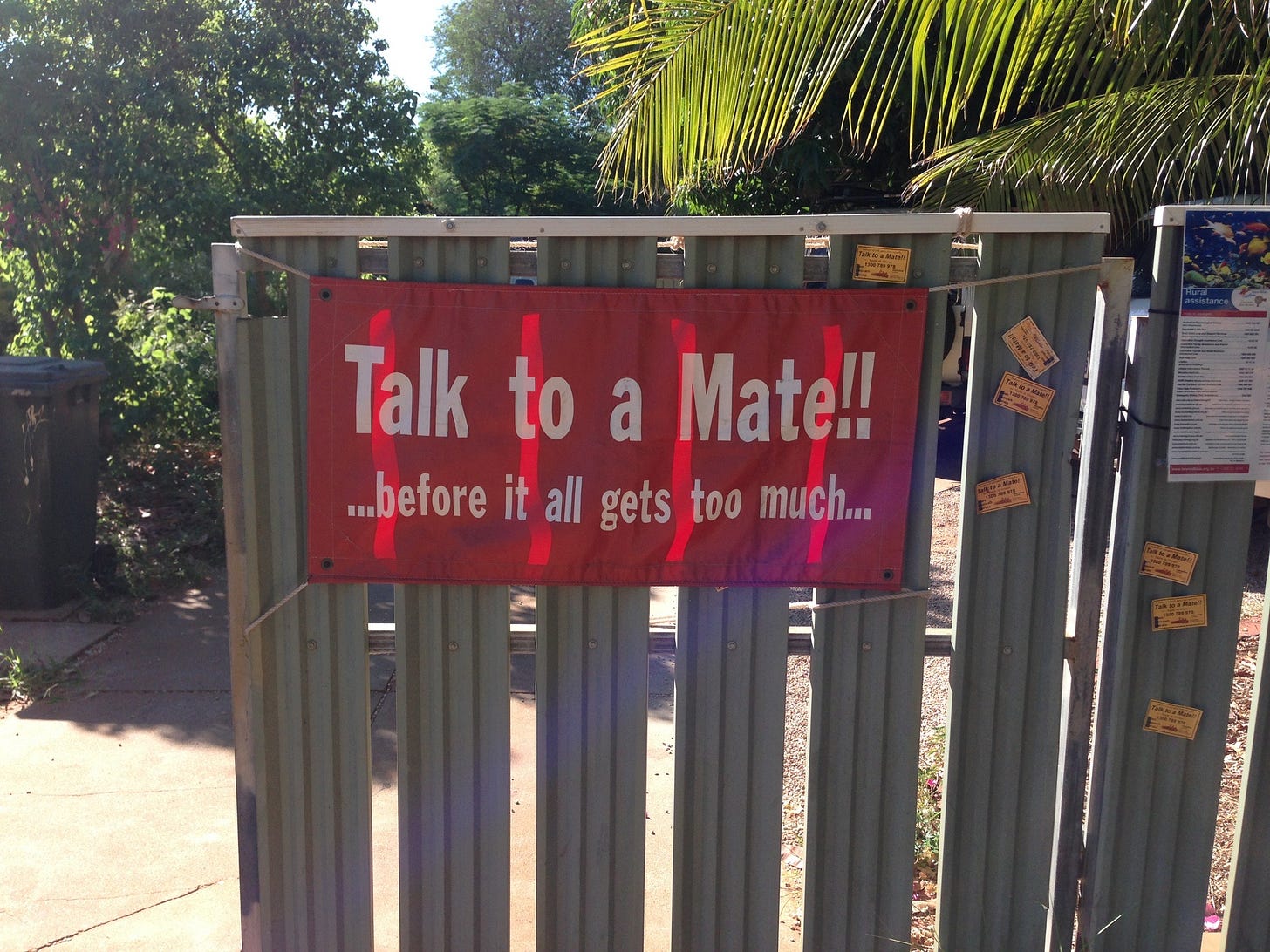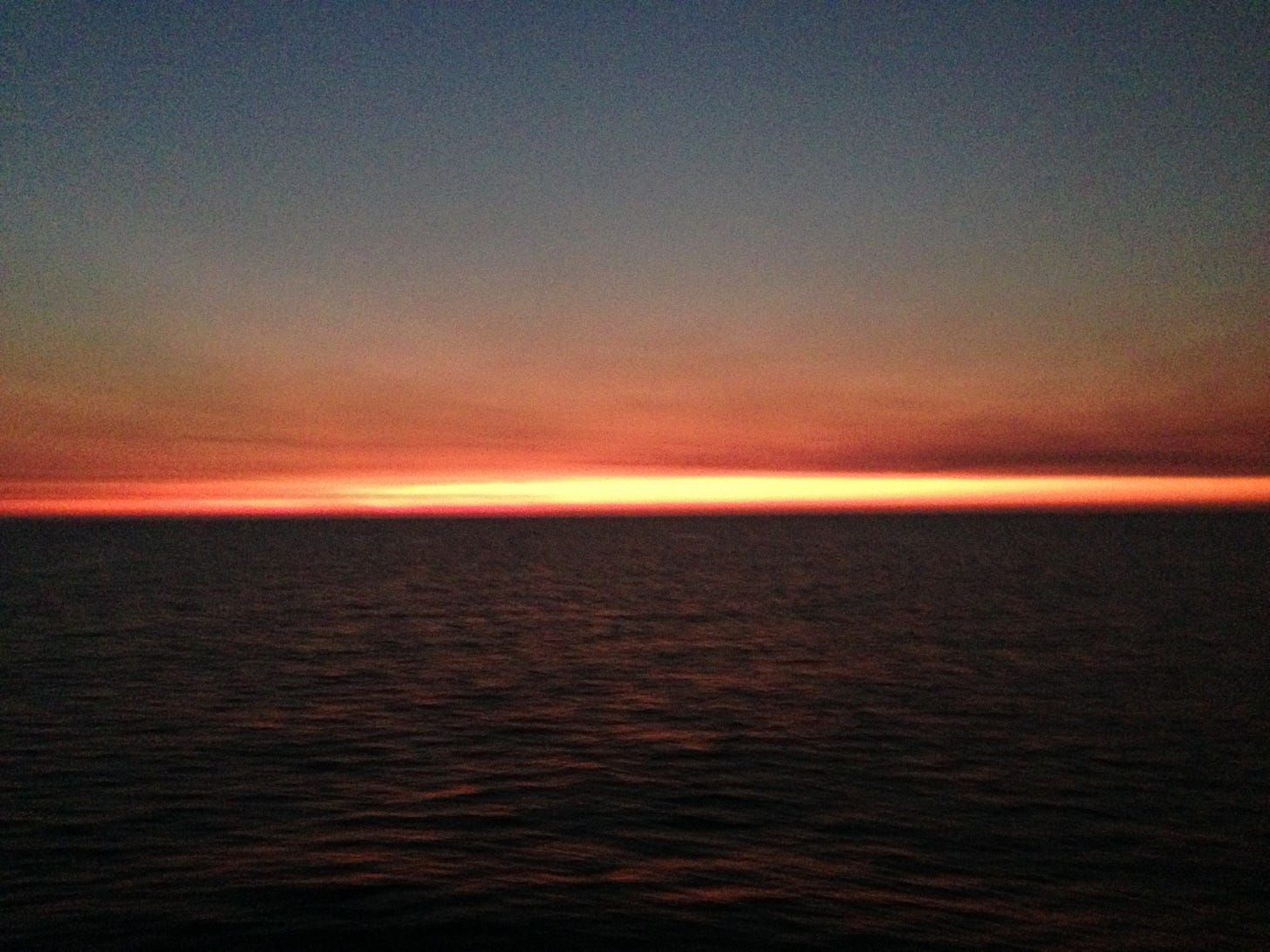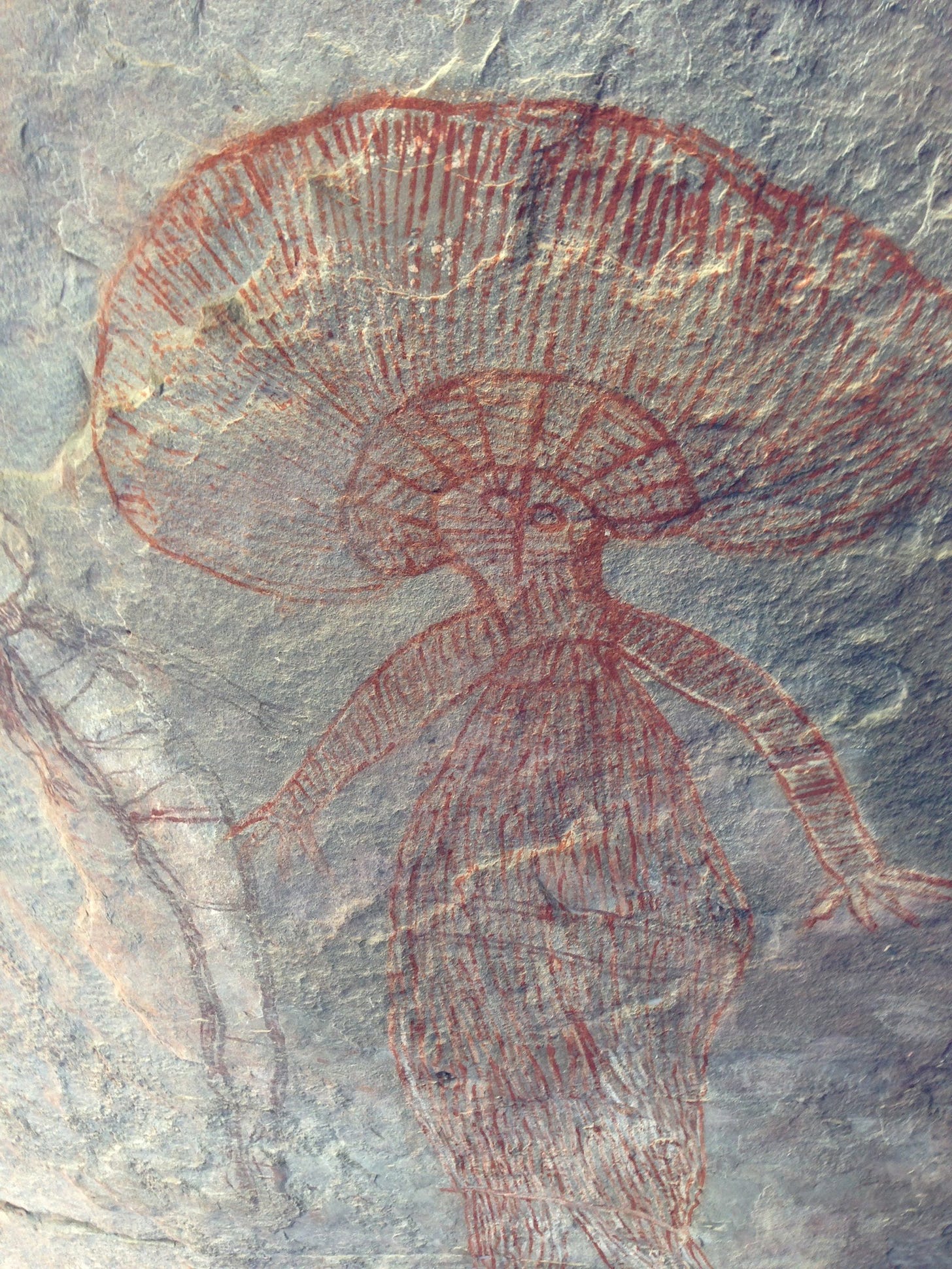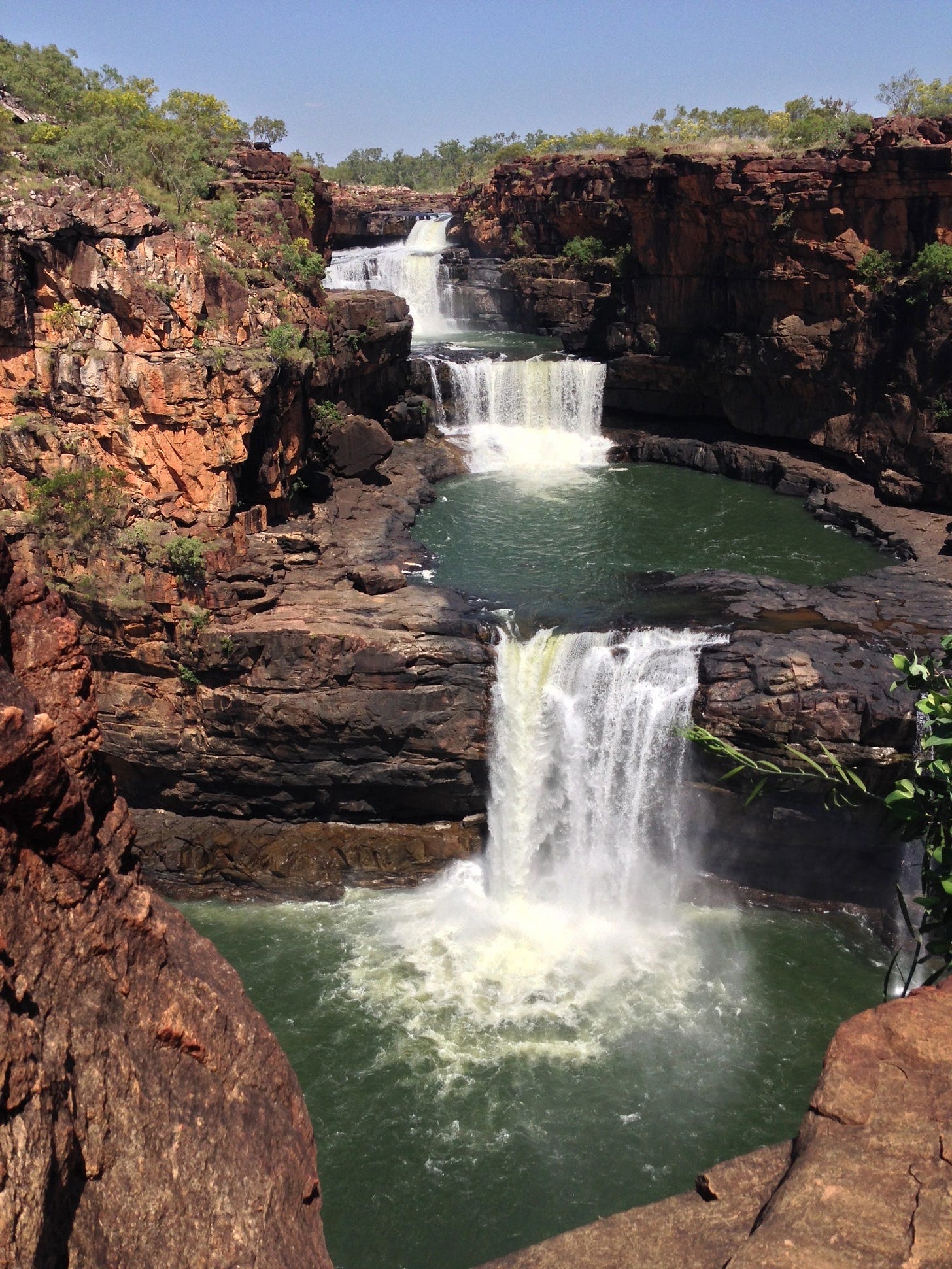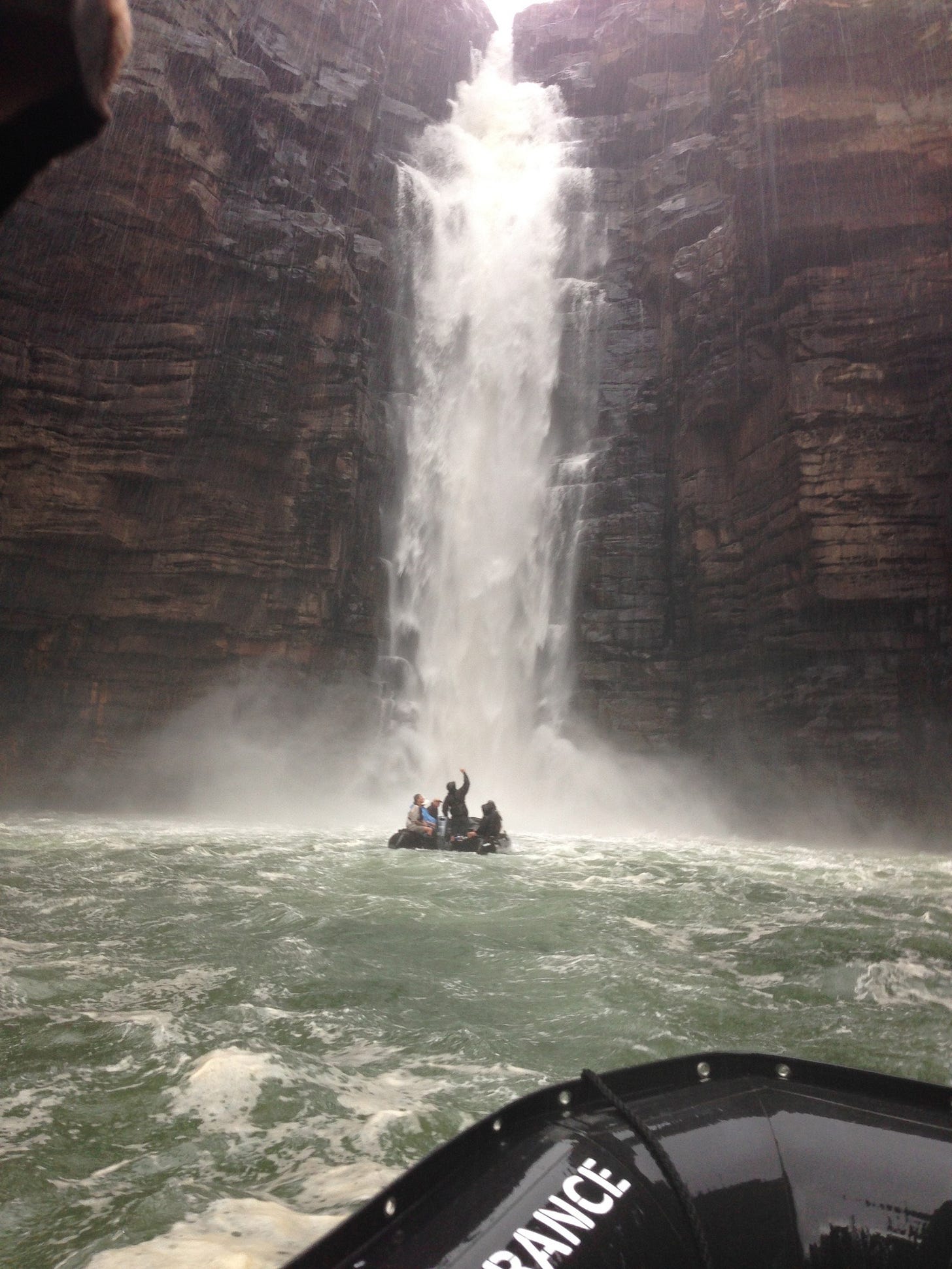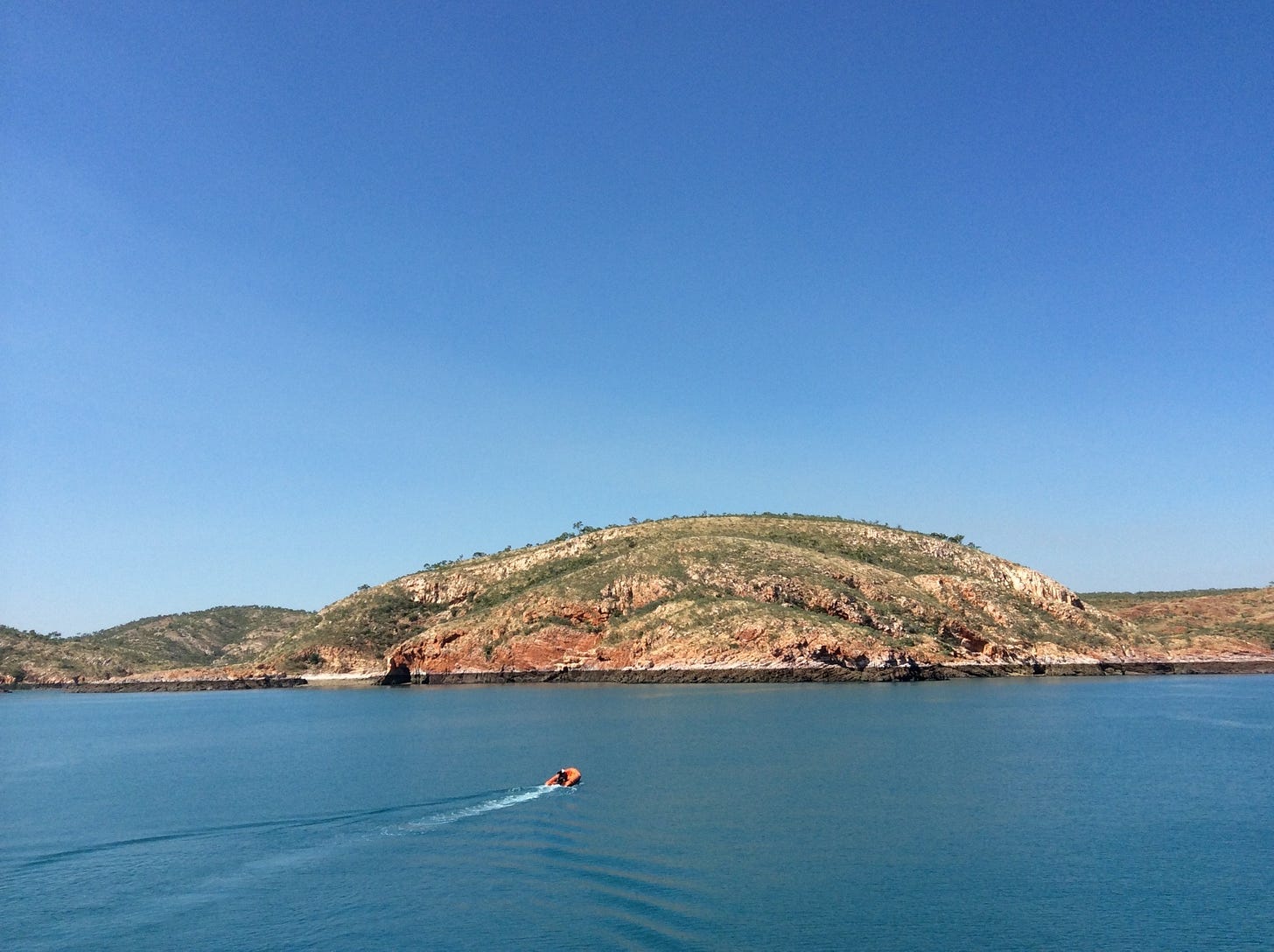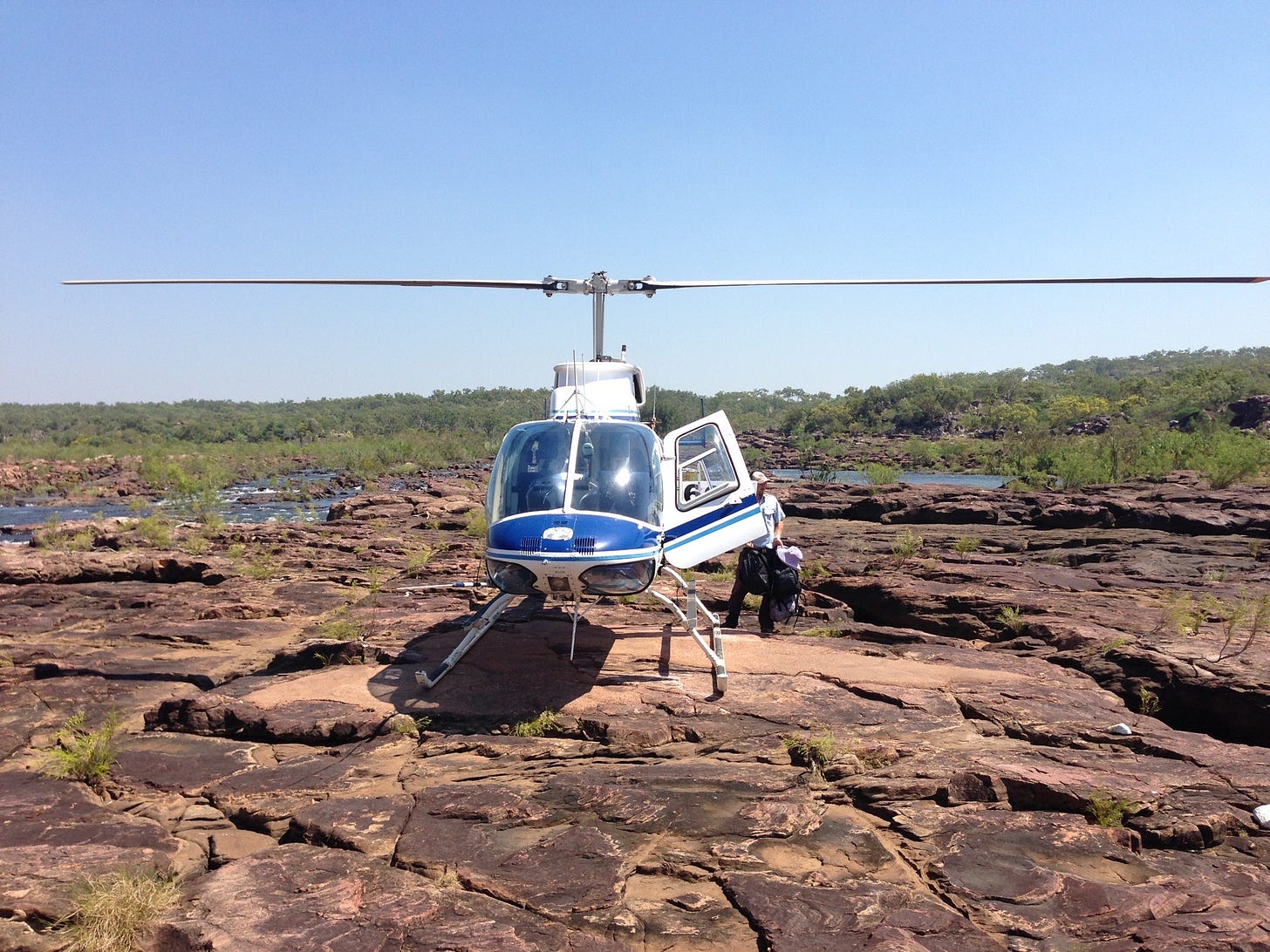Kimberley: the Last and Greatest Coast
A piece written a while back, but now: in full, with my photos of the trip
Cruising the Kimberley
Australia is big. Big and strange and beautiful and empty. I know that is hardly news, but until you come to the remotest parts of Oz – until you read about those first explorers who laid bloodshot eyes on its intractable loveliness – it’s difficult to grasp exactly how big. And silent. And strange.
Take, for instance, the famous Sturt Expedition to Central Australia in 1845. The thirst and heat were so intense the white men’s skin turned black, and the thermometer got to 52.8C - and promptly exploded (if it hadn’t, Sturt might have recorded the highest temperature experienced by humankind). Sturt himself went blind.
Even the aboriginal inhabitants, who lived in Oz for 40,000 years - untroubled by incomers - were somehow haunted by the hugeness of their homeland. In 1839, one aboriginal man, Warrup from the Noongar tribe, wrote this in the diary of his journey, alongside an early white explorer: “We go onwards, onwards, onwards, at boranyup we sleep - rain falls as we sleep at boranyup. Away, away, away, away, away; we see the water of Djunjup; we shoot game. Away, away, away, through a forest away, along our tracks away”. The repetition was his relatively unlettered way of describing the immensity. And I’m not sure anyone can improve on it.
I wonder then, what Warrup of the Noongar would have thought of Silversea Discoverer, a Japanese-built cruise boat, now plying the majestic blue waters of far north-western Australia. I suspect he would have been bewildered and impressed by the full-fat luxury: by the butlered suites, the hand made pastas, the endless free champagne, the minibar they fill with whatever-you-fancy.
And yet I reckon he would have been even more impressed by the Discoverer’s gloriously ambitious destination. Australia’s Kimberley Coast.
For decades the Kimberley has been prized by travellers as the world’s ultimate untouched coastline. One thousand miles of islands, archipelagos, ancient cave art, eucalyptus forest, unseen beaches, dancing cataracts, slithering lizards, smirking crocodiles, and brilliant emptiness. Yet for decades most of this peerless coast has been off limits to all but the hardiest trekker with months to spare, or people with private copters and half a mill.
But now you can see the Kimberley the best way possible: on a ten day ocean cruise. This means that in the giddy heat of the day, you duck in and out of the creeks and coves on Zodiac dinghies, chasing the flying fish and ogling the sea eagles; then you retreat in the evening to a mosquito-free cruise deck under a velvety black night sky, jewelled like a Camden emo-goth with the crucifix of the Southern Cross - while Vinnie from Brissie explains the vaguely shady way he made a billion from iron exports (“y’know some of the miners have villas in Bali? Tell ya Sean, if the writin’ ever dries up, go and be a digger in Darwin”).
The cruise starts in Broome, an old pearling town. The historic core is like a miniature Asian New Orleans: all handsome, balconied, Victorian pearlers’ homesteads; the suburbs are stridently green and prosperous, where sprinklers send the lorikeets squawking. Yet in this multicultural paradise there is a little tension: stroll under the boabs and you can run into motionless black figures - native Australians, just sitting there, silent and watchful. Ghostly silhouettes of Australia’s past.
For any white European, the encounter is pretty guilt-inducing. Why? Because, of course, you are meeting the dispossessed owners of this very land: it’s like bumping into bankrupt Anglo-Saxon warlords in a Winchester car park.
Yet Broome, with its throbbing intensities of tropical colour – green and blue and a special sun-crushed shell-white ochre – is also, thankfully, a good place to encounter a much happier aspect of modern aboriginal life: the art. People fly thousands of miles to Broome - just to buy First Australian art, with all its magnificent spots, squirls, and swathes of abstract expressionism.
From Broome we sail north-east, feasting on seafood, pasta con vongole, assiette of artichokes, and the sun. In the April-October dry season (which is when you want to see the Kimberley) the sun is everything in these parts. All seeing, and all powerful. An absolutist king.
One day at 4am, when the boat is hushed, I get up – with a light champagne hangover – and tread the unpeopled decks. The Timor sea is whispering in its sleep. Then the black sky begins to split lile overripe fruit, first with bruises of red, then with wounds of mauve, and then – quite suddenly – the sun rises, like an angry god, burning from the injustice of the dark. The mind blanks at the glare.
Moments later it is dazzling blue daytime, and the heat kicks in, and a school of exceptionally rare snubfin dolphins is curvetting in the wake of our boat - and at this point I realise Vinnie from Brissie has been standing besides me for the last forty minutes seeing what I was seeing, watching that Mark Rothko masterpiece of a Kimberley sunrise (and the singular Australian sky and desert is surely the source of that aboriginal talent for abstract expressionism). Vinnie shakes his head and says, very quietly. “Amazing.” Faint choking pause. “Just amazing.”
Onwards, onwards, onwards. Day Three sees us sailing down echoey canyons to drench ourselves in soaring waterfalls: it’s like canoeing down a cathedral nave to be showered by a giant. Quite exhilarating. Day Four, by way of contrast, we all clamber in the Zodiacs and go looking for cave art. But not just any old cave art.
After a long hour clinging to the speeding dinghies, churning across the sunlit waters we beach on a sandbar, climb a tough hundred yards through mangrove and spinifex, to be confronted with an open cavern ceiling, scrawled with eerily delicate stick figures. Mick, the smart and laconic expedition leader, explains what we are seeing: “This is Bradshaw Art. Looks old, right?” He smiles. “It is probably the oldest depiction of the human form on earth”.
The highs keep coming. The following morning I grab a much shorter Zodiac ride to a wide smiling beach, where a helicopter is waiting – just for me. Feeling a little like an ageing James Bond, I jump in the chopper, and a chatty pilot whirrs me across the Kimberley hinterland (“it goes on for 600 kilometres, mate, it’s as big as Germany”); then we land on a rocky outcrop and step out onto a hot, shadeless promontory to gawp at a quadruple waterfall; four glittering cascades, one on top of the other.
The beauty is almost blingy, as if this is Nature showing off; I calm myself by lying half naked in a burbling billabong, submerged in the coolness, eyes closed; the urgent dapple of sunlight on my eyelids is instant Zen. Unforgettable.
In the next few days I will see more glories. The biggest diamond mines on the planet. Evidence of the world’s oldest continuously surviving religion (Wandjina Art). The rippled-stone, multi-coloured miracle of the Bungle Bungles. I will see rock wallabies, lethal snakes, jabaroos, brahminy kites, and man-eating sharks escorted by remoras. I will gaze on football-sized jellyfish and fifteen foot crocs and excellent dinners of squid with soft polenta, and I will wait for my new cruise-boat friends to say hey it’s twelve thirsty as we start again on the free champagne.
But for now I’m lying here, on my own, in the billabong. Half submerged. My eyes are shut, my senses are drowned. And as I lie here, I remember that the orange rocks around me are two billions years old: formed before the very first life, formed when the skies on earth were always black. The feeling is daunting yet consoling, humbling yet inspiring: it is the quintessential lesson of a week in the Kimberley. Life is transient - yet everything goes onwards. Onwards onwards onwards; onwards and away.


